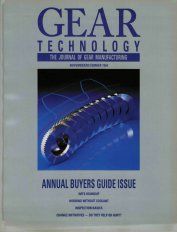McCormick Place, Chicago. A manufacturer's dream. Acres and acres of machine tools up and running - cutting chips, filling molds, moving material, bending, shaping, smoothing, measuring. Computers, robots and lasers everywhere - George Lucas goes to engineering school. Sounds, light and, most important, over 100,000 people, moving around, taking notes, asking questions and, above all, buying. This was IMTS '94. A heady, if tiring, experience.
